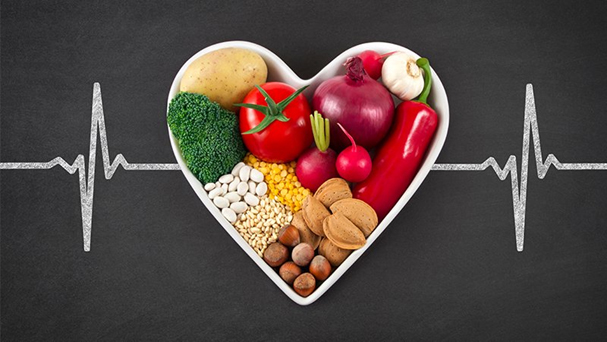Heart Healthy Diet: Eight Easy Steps to Prevent Heart Disease, Part I of IV
Take Control of Your Heart Health: A Dietary Approach
A trip to the cath lab or the discomfort of wearing a cardiac monitor is often a less-than-ideal experience. Why wait for a potential cardiac event? Taking proactive steps to improve your diet can significantly reduce your risk of heart disease.
Even if you've been following unhealthy eating habits for years, it's never too late to make a change. By understanding which foods to limit and which to prioritize, you can set yourself on the path to a healthier heart.
We know how hard it is to change your eating habits. To make it easier, start with these eight strategies to be on your way towards a heart healthy diet.

1. Control your portion size
Beyond What You Eat, How Much You Eat Matters
While the quality of your food choices is crucial, the quantity is equally important. Overeating, even of healthy foods, can lead to weight gain and other health problems. Here are some tips to help you practice portion control:
- Mindful Eating: Pay attention to hunger and fullness cues. Eat slowly and savor each bite.
- Plate Up Smart: Use smaller plates and bowls to naturally reduce portion sizes.
- Listen to Your Body: Stop eating when you feel satisfied, not stuffed.
- Read Food Labels: Understand serving sizes and nutritional information.
- Cook at Home: This gives you more control over portion sizes and ingredients.
Understanding Serving Sizes
Knowing the appropriate serving size can help you avoid overeating. Here are some common serving sizes:
- Protein: About the size of a deck of cards
- Grains: A half-cup of cooked pasta or rice
- Vegetables: A cup of raw vegetables
- Fruit: A medium-sized fruit or a half-cup of cut-up fruit
By practicing portion control and making mindful food choices, you can significantly improve your heart health and overall well-being.
2. Eat more fruits and vegetables
Fruits and vegetables are essential for a heart-healthy diet. Packed with vitamins, minerals, and fiber, they can help:
- Lower cholesterol: Reduce LDL (bad) cholesterol and increase HDL (good) cholesterol.
- Control blood pressure: Potassium-rich fruits and vegetables can help regulate blood pressure.
- Protect against chronic diseases: Reduce the risk of heart disease, stroke, and certain types of cancer.
- Aid in weight management: Low in calories and high in fiber, they promote satiety and weight loss.
Incorporating Fruits and Vegetables into Your Diet
Here are some tips to increase your fruit and vegetable intake:
- Snack Smart: Keep fresh fruits and cut-up vegetables on hand for easy, healthy snacking.
- Add to Meals: Incorporate fruits and vegetables into your breakfast, lunch, and dinner.
- Experiment with Flavors: Try different cooking methods, such as roasting, grilling, or sautéing, to add variety and flavor.
- Choose Wisely: Opt for fresh, frozen, or canned fruits and vegetables with no added sugars or sodium.
Table 2: Fruit and Vegetable Choices
Heart-Healthy Choice Less Healthy Choice
Canned vegetables (low-sodium) Canned vegetables in heavy syrup
Canned fruit in juice or water Canned fruit in syrup
Frozen or fresh fruits and vegetables Frozen fruits with added sugar
Breaded or fried vegetables
Vegetables in a creamy sauce
By making conscious choices and incorporating more fruits and vegetables into your diet, you can take significant steps toward a healthier heart.